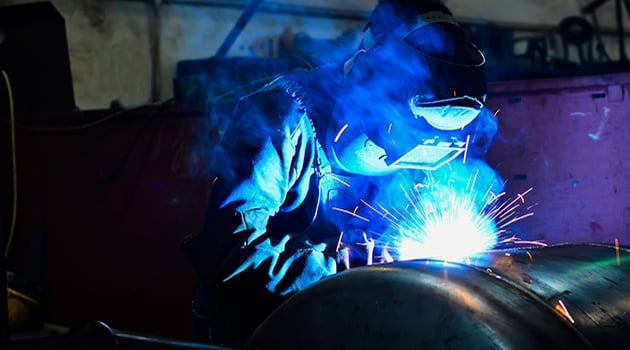
Here at Corrotherm we’re proud to supply some of the most technically advanced nickel alloys on the market. These materials are used for essential industry applications and are required to perform in extreme environmental conditions. In order to be able to offer such exceptional properties, these nickel alloys need to be manufactured by experienced engineers who understand exactly how to combine different elements to produce a superior end result.
Essentially, both alloys and composites are a mixture of at least two different components to create a new material. But when producing materials for industrial applications and parts, the two have very different characteristics.
What is an alloy?
An alloy is a mixture of a minimum of two components, at least one of which will be a metal. The different elements are blended together precisely, with the final composition being presented by mass as percentages. You can see on our Grades pages that all of the nickel alloys we supply have a breakdown of the different elements with their percentages, most containing more than one metal.
For example, the popular INCONEL alloy 625 has 58% nickel, 20-23% chromium, 8-10% molybdenum and 5% maximum iron. There are also a number of other supplementary elements within the composition. When components are blended together in an alloy, the material takes on properties that the individual elements do not possess, creating a uniquely strong, corrosion-resistant material.
Creating nickel alloys is a technical and complex procedure that requires fine balancing of elements and understanding the exact percentages needed of each to give the best results. Using the above INCONEL alloy 625 as an example, the added elements give properties that nickel alone could not achieve. The molybdenum gives particularly high strength in annealed condition, and the nickel-chromium blend provides exceptional corrosion resistance.
What is a composite?
A composite, like an alloy, is a mixture of two or more components, however it does not have to contain any metal. Usually the elements are vastly different to one another chemically and physically, and bringing them together makes them stronger or introduces other desirable properties.
There are two different types of components within a composite. There is the ‘matrix’ material and a ‘reinforcement’ material. As the base elements are so different to one another, they stay separate and distinct within the finished structure of the material, rather than mix together as one new whole.
There are naturally occurring composites, the most common one of which is wood. Wood has a matrix material of lignin and the reinforcement material is cellulose fibres. But manufactured composites have a wide range of uses. For example, reinforced plastics, such as fibre-reinforced composites, can be found in use in the aerospace industry, where they are useful due to their light weight and high strength.
Find out more about the range of nickel alloys that Corrotherm supplies by speaking to a member of our experienced and knowledgeable sales team. Contact us today.
 Alloys and composites – what’s the difference
Alloys and composites – what’s the difference

